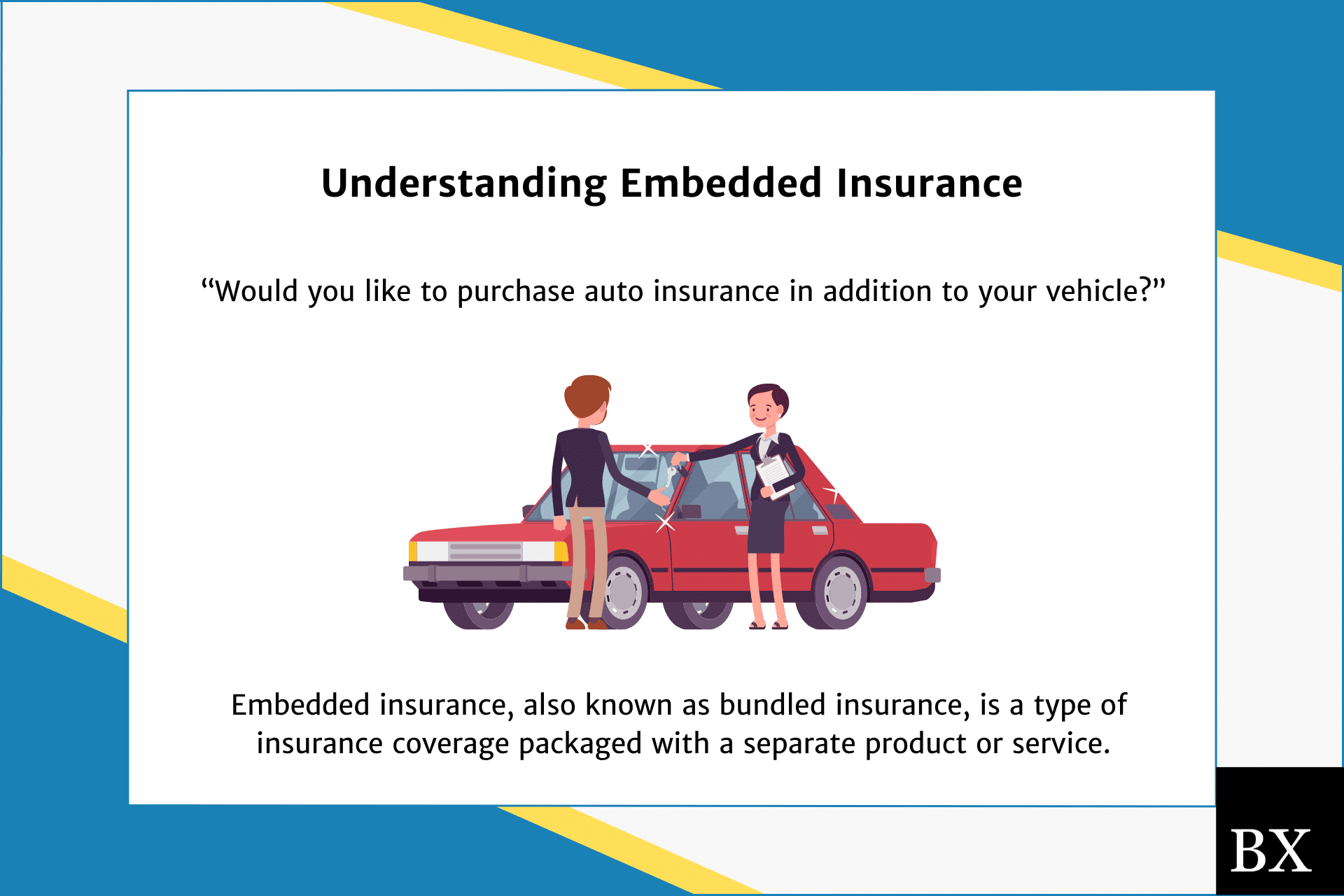Embedded Insurance: Convenience at the Expense of Quality

The year is 1925, and in a lobbying campaign so bold that it would make modern players blush, lawyers for Chrysler and Palmetto Fire Insurance Company are attempting to force their new partnership past a slate of skeptical state Insurance Commissioners and into the threshold of legality.
The partnership was a first of its kind. Fire and theft insurance, provided by Palmetto, was embedded in the sale of new Chrysler cars. This historic example laid the foundation for a new insurance distribution model that is still with us today.
Fast-forward 100 years and embedded insurance has evolved from a controversial new concept into a multiple billion dollar source of premium. It has infiltrated, or is predicted to infiltrate, nearly all facets of the insurance industry. While embedded insurance offers much when it comes to convenience, many within the industry view the phenomenon with a healthy level of skepticism, aware of its pitfalls and the threat it poses to their livelihoods.
For example, when I was fresh out of college and interviewing for an insurance internship, the seasoned, slightly grizzled interviewer threw me a curveball: “Do you buy insurance or prepaid gas from rental car companies?” Being too young to rent a car, I dodged the question. After an awkward pause, the interviewer revealed a nugget of wisdom—no self-respecting insurance professional would ever purchase embedded insurance products.
Did he know something I didn’t? As it turns out, the answer was an emphatic yes.
In this article, we explain what embedded insurance is, how it works and why its convenience can never measure up to the value provided by independent agents. While embedded insurance may offer a quick and easy solution, it often lacks the personalized service and tailored coverage that independent agents can provide. This is a key advantage that agents can leverage in the face of this growing trend.
First Things First
Before we discuss how agents can compete in an environment saturated with embedded insurance, we must first define it.
Embedded insurance, also known as bundled insurance, is a type of insurance coverage packaged with a separate product or service. We’re all familiar with this concept, such as rental car insurance or gap insurance from the car dealer. But now, the scope of embedded insurance is expanding rapidly, with disruptive partnerships like Carvana and Root Insurance shaking up the auto insurance market. Industry leaders like Chubb are even predicting over $700 billion of P&C premium will be generated via embedded insurance offerings by 2030.
Other products combine features of embedded insurance with data analytics to offer discounted rates to insurance buyers. For example, Tesla’s partnership with Liberty Mutual offers “Real-Time Insurance,” a product that uses real-time driving behavior to rate policies. Tesla’s ability to collect and disseminate data to its insurance partners provides a significant competitive advantage.
Uber’s foray into embedded insurance threatens commercial lines, a product most of us thought was protected from disruption. Uber drivers, whether they like it or not, automatically receive rideshare insurance provided by Uber. Of course, the coverage is not free, and Uber passes on the costs via reduced rates paid to Uber drivers and increased rates to riders.
The potential expansion of embedded insurance into other products, like homeowners insurance paired with mortgage loans or even certain commercial lines, poses significant risks to the traditional insurance market. However, it also presents opportunities for those who can adapt to this changing landscape. This is a crucial point for insurance professionals to consider as they navigate the industry’s future.

What It Means For You
In nearly all use cases, embedded insurance removes agents from the purchasing process. The insurance company providing the coverage partners with the business providing a good or service, which then offers coverage as an ancillary product. For example, think about when your apartment building offers you rental insurance. The building owners are actively soliciting you to obtain the insurance coverage, and are incentivized by the protections offered by rental insurance like liability and negligence caused by the tenant. The problem is that the building owners are not licensed agents and cannot properly or legally advise the buyer on what coverage is right for them or even explain the provisions of the policy.
Is this really what is best for the consumer? Some would argue yes – the convenience of instantly obtaining coverage related to a product or service outweighs the pitfalls of a one-size-fits-all insurance product. Regardless of our opinions on the merits of embedded insurance, the market is embracing the concept and the segment is growing.
Don’t Worry, It’s Not All Doom and Gloom
Right now you are probably envisioning a future in which all of your core lines are sold as embedded products, and the traditional agent is squeezed out of the process in its entirety. However, you can set your mind at ease, as customer data still indicates that a large majority of consumers insist on consulting with an agent before purchasing “high stakes” coverage such as home and auto.
The primary selling point of embedded insurance is convenience. While some consumers may be enticed by the simplicity of a point-and-click purchase, the consequences of inadequate coverage can be disastrous. Hence, the reticence most consumers show in obtaining P&C lines without first consulting with an agent.
“One Size Fits All” Meets Reality
In the world of surety, virtually all coverage is the same because the obligee, the entity requiring the insurance, sets the terms of the bond. A $50,000 Auto Dealer Bond is a $50,000 Auto Dealer Bond, no matter where or how you obtain it.
This is why bond providers’ competitive advantages primarily come down to price, ease of issuance, customer service and claims handling. You never see bond companies advertise based on the provisions contained within the policies they issue. Instead, surety companies center their pitches around their capabilities to issue and service your bond book.
The same cannot be said for other, more traditional lines of insurance. Each policy is unique, and each insured has different risks that need safeguarding against. While product lines such as renters insurance are one thing, adopting the “one size fits all” model of embedded insurance for core lines does a disservice to the millions of consumers who need policies tailor-made to fit their needs. This is a key distinction that insurance professionals need to understand as they navigate the changing industry landscape.
For the industry veterans reading this article, I’m sure you could write entire novels filled with horror stories you’ve encountered throughout your careers of consumers who inadvertently purchased inadequate coverage and had their claims denied when tragedy struck. Unfortunately, purchasers of embedded insurance exponentially increase their risk of becoming just another cautionary tale on the importance of doing due diligence when obtaining insurance.
While embedded products may be convenient at the point of sale, that convenience quickly flies out the window when insureds realize they purchased coverage that 1.) is inadequate, and 2.) contains clauses and fine print they would have never agreed to had they been advised on the policy specifics beforehand.
Now this isn’t to say that agents shouldn’t look to implement embedded offerings into their core lines, as commodity products such as surety bonds provide ample cross-selling opportunities.
Competing with Convenience
Will embedded insurance make independent agents a thing of the past? We don’t think so, and you shouldn’t either. While embedded products are gaining traction, and we expect the growth to continue, agents can take steps now to protect their business.
So what can you do about it? In short, by highlighting the value you provide to insureds, you can draw a stark contrast between the surface-level convenience offered by embedded insurance and the peace of mind of knowing that when the rubber meets the road, your customers will have the coverage needed to recoup their losses.
Focus on Value-added Services
Offering personalized advice, risk management services, and comprehensive coverage options that embedded insurance might not provide helps differentiate you from the one-size-fits-all approach offered by embedded insurance. Emphasizing the value you bring beyond just selling insurance policies will help you retain existing customers and attract new ones.
Educate Customers
Many insureds may not fully understand the limitations or coverage gaps in embedded insurance products. As an agent, you educate your clients about the importance of tailored coverage, policy terms, and potential risks, thereby helping them make informed decisions.
Customize Solutions
Agents can leverage their expertise to craft customized insurance solutions tailored to the specific needs and risk profiles of their clients. This personalized approach can address gaps in coverage that may exist with embedded insurance products.
Integrate Technology
Embrace technology to streamline processes, enhance customer experience, and offer competitive pricing. Utilizing digital tools for customer relationship management, online quoting, and policy management can help agents remain agile and efficient.
Partner and Collaborate
Collaborate with companies offering embedded insurance to create complementary offerings or bundled packages that provide added value to customers. By forming strategic partnerships, agents can expand their reach and provide comprehensive solutions while maintaining their role as trusted advisors.
Emphasize Customer Service
Providing exceptional customer service and ongoing support can set agents apart from embedded insurance providers. Being accessible, responsive, and proactive in addressing client needs can strengthen relationships and foster loyalty.
Adapt and Innovate
Stay abreast of industry trends and adapt business models to meet evolving consumer preferences. Agents can explore innovative ways to package and deliver insurance products, such as usage-based or on-demand coverage, to stay competitive.
An Irreplaceable Level of Value
At the end of the day, no level of convenience can replace the value that agents provide to their customers. While embedded insurance offers much when it comes to simplicity, obtaining the correct coverage demands careful consideration and consultation with a trusted advisor. The consequences of obtaining improper coverage can be catastrophic, and as we all know, a one-size-fits-all approach simply doesn’t cut it with core lines.
While trends come and go, the true staying power within the industry lies with the agents and the irreplaceable value they provide to their customers.
We're More Than Just Instant Issue

